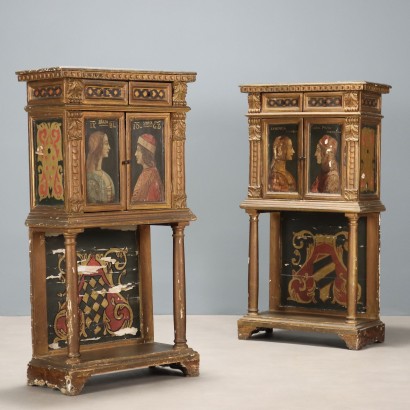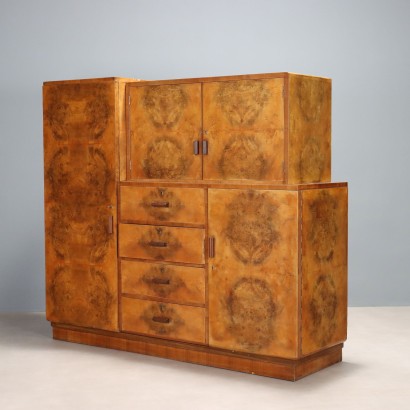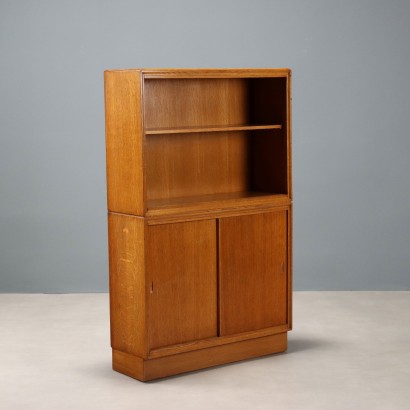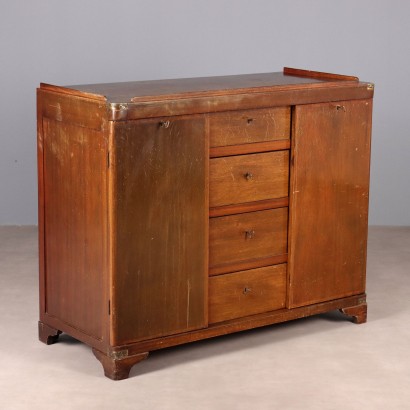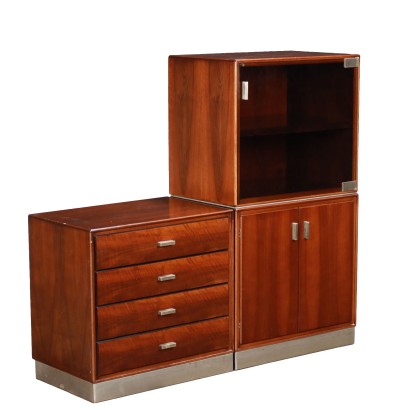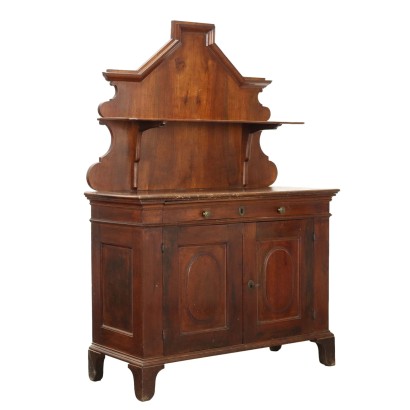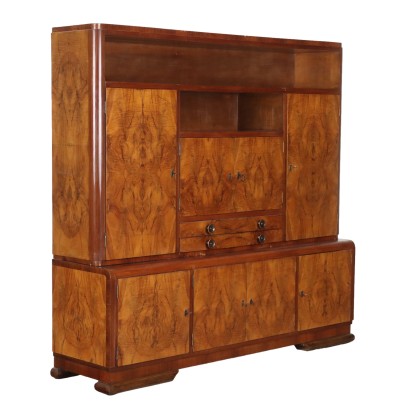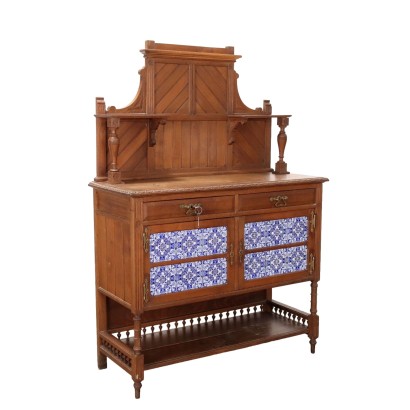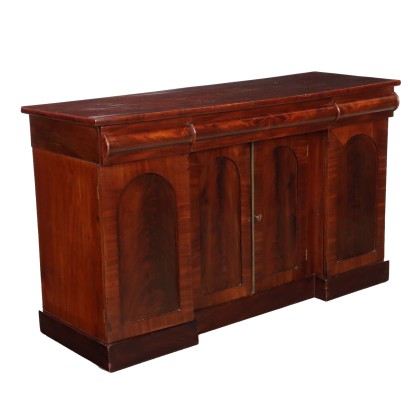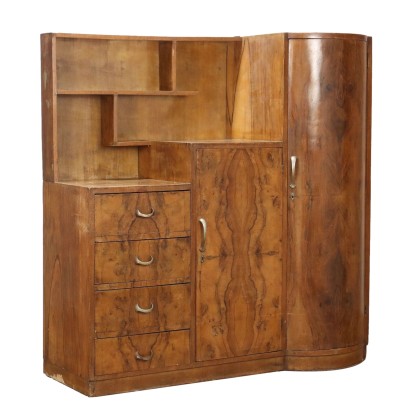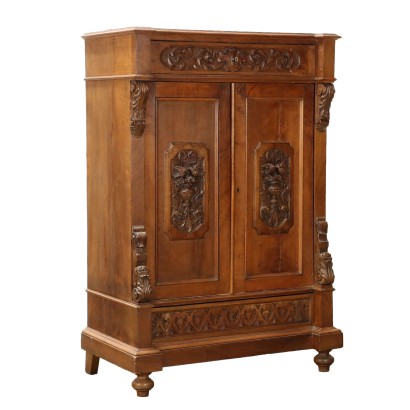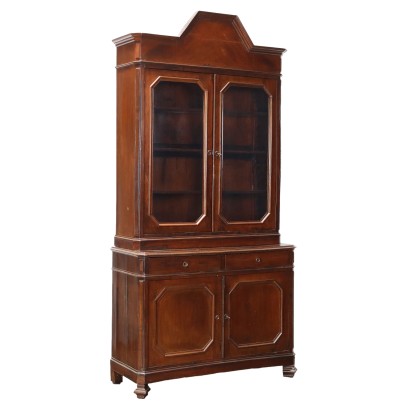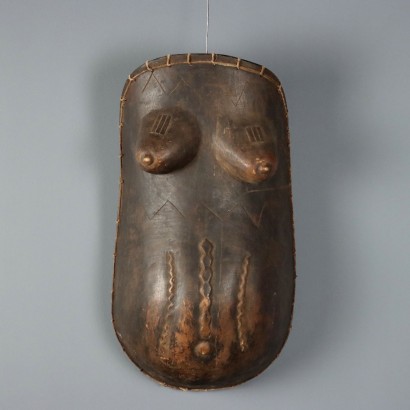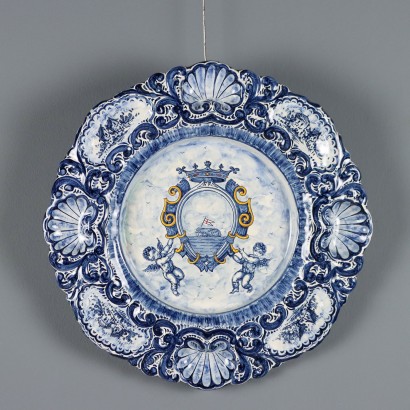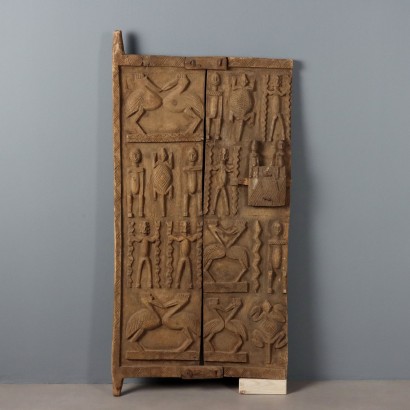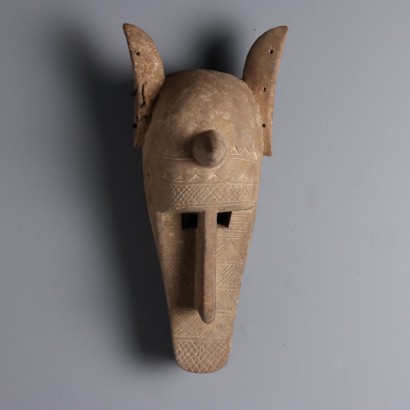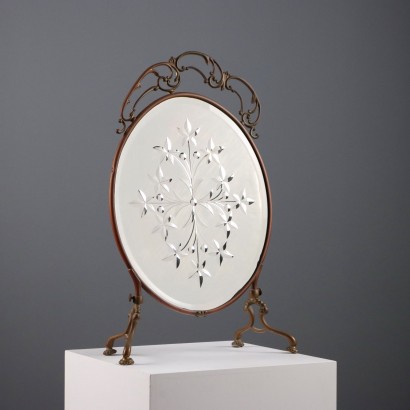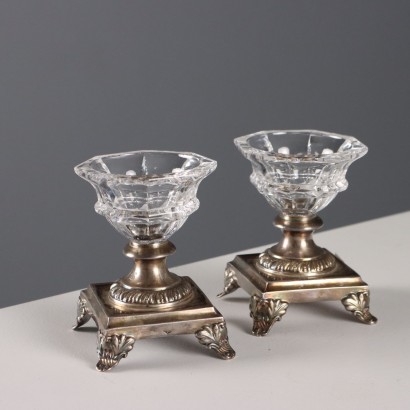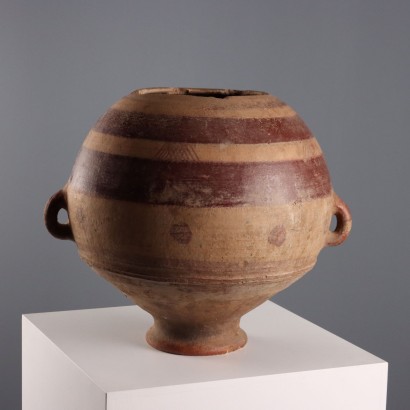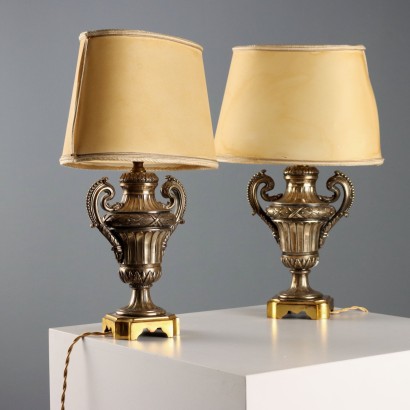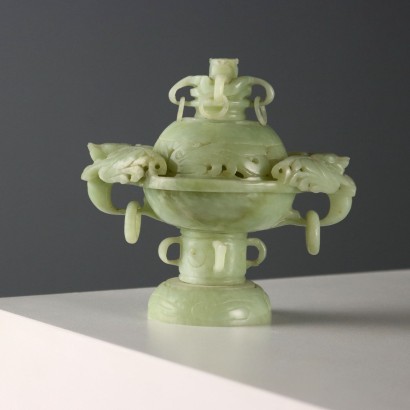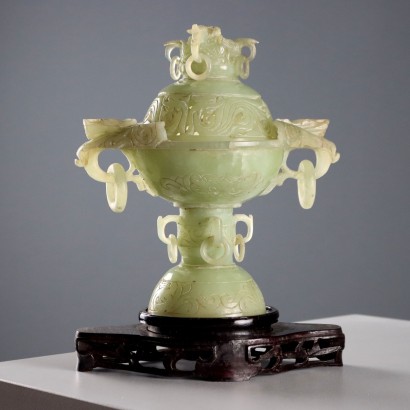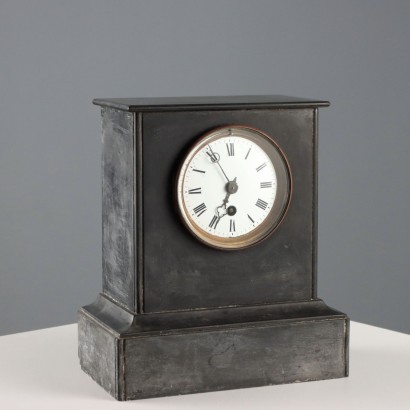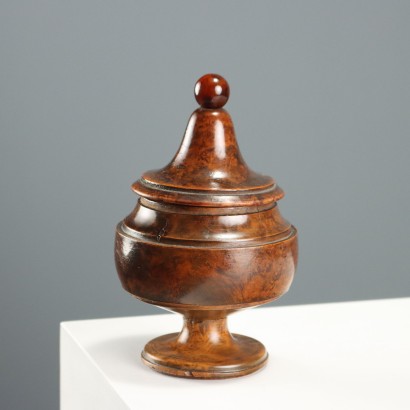Pair of Small Renaissance Style Cabinets - Italy Early 20th Century
Features
Italy Early 20th Century
Style: Renaissance Revival
Age: 20th Century / 1901 - 2000
Origin: Italy
Main essence: Silver Fir , Poplar
Description
A pair of small cabinets painted in Renaissance style in the early 1900s. Supported by tall columns with a painted panel on the bottom, they feature two doors on the front. The doors depict profiles of Renaissance ladies and knights: the Sforzas on one, Ludovica Tornabuoni and Ioan Picus Mirandola on the other. The Medici coat of arms is on the sides, and other coats of arms adorn the base. Entirely painted in polychrome and partially gilded, with numerous paint losses.
Product Condition:
This piece of furniture requires restoration and polishing due to its age and wear. We strive to present the true condition of the piece as accurately as possible with photos. If any details are unclear from the photos, the description will apply.
Dimensions (cm):
Height: 113
Width: 61
Depth: 27
Additional Information
Style: Renaissance Revival
This style is associated with all furniture and objects which, due to their characteristics, recall the trends and style in vogue in the Renaissance.During the Renaissance, some furniture in rich houses took on greater importance with the addition of elevations and canopies closed with sheets and fabrics.
In public and religious buildings the wooden benches, bookcases and choirs are more impressive and decorated.
This style develops initially in Italy, where the artists are inspired by classical sources; only later will the new culture expand into Europe.
Subsequently this trend will be present in the Kingdom of Naples and Sicily, in Spain, in Flanders, in Germany and England.
Age: 20th Century / 1901 - 2000
20th Century / 1901 - 2000Main essence:
Silver Fir
Soft coniferous wood, used for rustic furniture or to build the chest, that is the structure, of furniture then veneered in more precious woods. It has been used since ancient times, its most valuable use is, in the Spruce variant, in the inlays of French antique furniture of the '700 . The spruce, more typical of northern Europe, in Italy grows mainly in the Eastern Alps at altitudes above 1300 m. The noblest use of this essence was in the construction of violins, guitars and cellos: Stradivari himself produced his famous violins with this wood.Poplar
Essence considered "poor", it is a white wood, with yellowish or greyish shades, light and tender, which is easily damaged. It is used for rustic furniture or in the construction of furniture. The most valuable use it has had in the history of furniture is in Germany, in the 19th century, for veneers and inlays in the Biedermeier period.Other customers have searched:
Ecco qualche spunto dal nostro blog e da FineArt per scoprire di più sul tema credenze:
Leggi di più
Una credenza che dialoga con il passatoCredenza doppio corpo, tesoro di intagli e decorazioni
Piccolo stipo, grande arredo
Stipo toscano a cavallo tra XVI e XVII
Credenza Barium di Luciano Frigerio
Credenza, Mathieu Befort Jeune, Parigi, terzo quarto XIX secolo
Mobile anni '60
Highboard '503' Gianfranco Frattini per Bernini
Mobile bar anni '40
Mobile Bar anni '40 '50, manifattura italiana
Sull'antiquariato in generale dai un'occhiata anche a:
Classic Monday: da un pezzo dei nostri magazzini alla storia dell'antiquariato
L'antiquariato dalla A alla Z: il Dizionario dell'Antiquariato
Il dizionario dell'antiquariato - Lastronatura
Il dizionario dell'antiquariato - Mascherone
Il dizionario dell'antiquariato - Natura morta
Il dizionario dell'antiquariato - Opificio
Il dizionario dell'antiquariato - Pastiglia
Il dizionario dell'antiquariato - Savonarola
Il dizionario dell'antiquariato - Rosone
Product availability
The product can be seen at Cambiago
Immediate availability
Ready for delivery within 2 working days from ordering the product.

